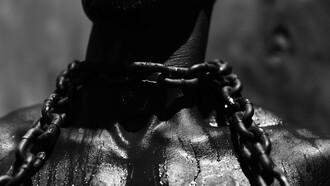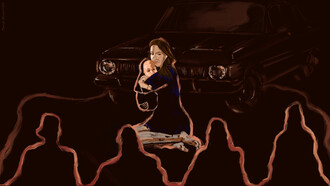Horace Walpole was the son of Robert Walpole and sought to escape the politics which he said had destroyed his father. He published the Castle of Otranto, A Gothic Story in 1764 claiming it was a translation of a text found in the library of a catholic family and printed in Naples in 1529. It was initially published anonymously but after a successful reception, Walpole added a second preface where he acknowledged authorship. The idea of presenting the author as an editor was a common device as it gave the impression of authenticity. It also protected the author from a critical reception of the work. Originality was seen as part of individualism, which Kilgour argues creates anxiety about influence and in turn a rivalry between past and present. Identifying yourself with other authors was seen as a way of counteracting competition and individualism. By including the word gothic, he was creating a new type of romance, a genre for others to follow. The term gothic, in the decades after the glorious revolution, was a category within the debates about the economy, politics and social change. It was regarded as a distant non-specific period of ignorance and superstition from which a civilised nation had arisen and a constitutional purity and political virtue from which the nation was alienation.
Gothic stood for old-fashioned, primitive, barbaric, pagan and cruel, a move away from order and reason and towards emotion and the imagination. Power is invested in a feudal aristocracy which by the eighteenth century was being undermined by a rising middle class. By setting the action in the past it provided a stable background compared to the changing values of the present. Walpole used Italy as an ‘exotic’ location with a longstanding feudal government and Roman Catholicism, which he compared to British liberty and enlightened Protestantism. Walpole established elements of the gothic novel - the castle, villain, innocent persecuted heroine and the supernatural. This allowed him to combine the chivalry of romance with unusual circumstances. He claimed the realist novel had stifled the imagination through its adherence to ordinary life. By extending the sentimental tradition of incorporating feeling into the novel he sought to provoke a response from his readers. Not the finer feelings of sentimental novels but shock, fear, anxiety, sympathy and horror. Whereas the realist and sentimental novel had asked readers to consider external actions and the world around them, the gothic looked inward towards mental processes and reactions.
Emma Clery suggests that the increase in ghosts was meant to fight against atheism and create a connection with the afterlife. In Otranto, the ghost of Manfred’s grandfather comes out of the picture and like Hamlet he says he will follow it. Servants are portrayed as more susceptible to superstition due to a lack of education. When Matilda hears singing, she dismisses the idea of a spirit and attributes it to a person. Later gothic writers, such as Ann Radcliffe, would seek to undermine the supernatural by providing a reasoned explanation and dismissing ghosts as nothing more than superstition. They would also develop atmosphere through Burke’s idea of the sublime terror of nature.
Manfred is the feudal baron who loses his son in a freak accident when a giant helmet crushes him to death on his birthday and the day of his intended wedding. As Kilgour points out, this unites birth, death and marriage. It also leaves Manfred without a male heir which for a regime reliant on primogeniture for its legitimacy was a problem. As a villain, Manfred is portrayed as aggressive, jealous and obsessed with maintaining his position. This leads Manfre to consider drastic action, not only confining his future daughter-in-law to the castle but contemplating divorcing his wife and marrying the young woman to ensure an heir. This attitude is contrasted with changing eighteenth-century views which were moving towards the companionship marriage and away from the aristocratic model based on family alliances and the consolidation of power. When he sees Theodore in armour, he thinks it is Alphonso’s ghost who returned to accuse him. Walpole bases Theodore’s claim is through his mother which prevents him from being seen as a direct challenge to his father but still undermines Manfred’s position.
Father Jerome represents Catholicism in the novel and informs Manfred that Isabella has sought sanctuary at St Nicholas. When Manfred suggests divorcing his wife to marry Isabella, he says it is for the good of the state as he needs an heir. The priest is horrified and states the church would not sanction this. However, Hippolita is happy to submit to her husband’s request. Foucault in Madness and Civilisation suggests monsters have a role in warning society about potential unethical acts and disorder. According to Roman Catholic beliefs, Manfre divorcing his wife and sending her away to a convent would be unethical.
Heroines are often portrayed as idealised figures of beauty, young, innocent and virtuous, they are persecuted and imprisoned by the villain and waiting to be rescued by the chivalrous hero. In Otranto Isabella is the persecuted heroine at risk of being married to a man much older than herself, thus highlighting the lack of freedom for women who were given away in marriage. She flees to the subterranean passages below the castle to escape Manfred. Every noise frightens her and she regrets having gone to such a dismal place. This allows the reader to experience fear without being in any danger.
Otranto established the basic elements used by later authors in the 1790s to create dark, moody, psychological stories designed to provoke fear and anxiety among their readers. Many of these new writers were women, supported by publishers such as the Minerva Press and The Lady’s Magazine. Even today, the majority of these authors remain obscure, labelled as formulaic and of lower quality compared to works such as Frankenstein and Dracula.















